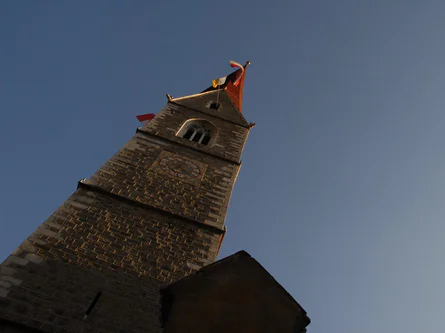The parish Church of the Assumption and the Chapel of St. Michael had to be rebuilt after the fire in 1499 and both were restored in neo-baroque style and consecrated in 1505. Around 1900, there were additional stylistic renovations in the 'Jugendstil' and the 90-meter bell tower is the tallest in the entire Tyrol. The church is open all year. Worship Sat 7 pm, Sun 8.30 am, 10 am, 7 pm






















































